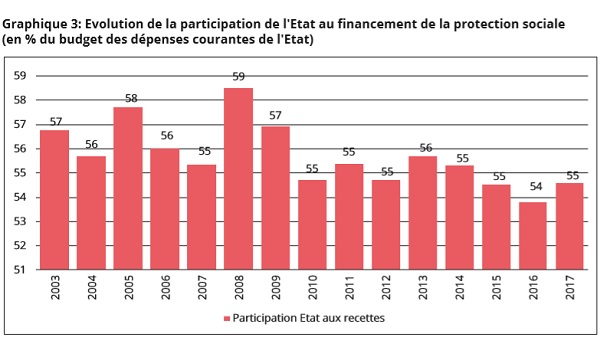
The General Inspectorate of Social Security (IGSS) has just published its 43rd General Report on Social Security for the year 2017; the report presents in detail the evolution of the revenue and expenditure of the various social protection schemes, the characteristics of the beneficiaries, an analysis of the beneficiaries as well as the services provided and supported by the various schemes.
Key figures for the year 2017
In 2017, receipts from social protection amounted to €13,729 million, up 4.4% over 2016. Current expenditure reached €12,442 million, an increase of 6.7% compared to 2016. The balance sheet for the year 2017 therefore presents a positive overall balance of €1.286 million, or 2.3% of GDP.
On the benefits side, by adopting the structure proposed by SESPROS (European System of Integrated Social Protection Statistics), the benefits of the old-age represent, with a share of 39.6%, the largest expenditures of benefits provided by the social protection system in 2017. Then, in order, are the benefits of health care (24.9%), those of the family (15.4%) and of disability (10.7%), which includes disability pensions, accident benefits and annuities, income for the severely disabled and long-term care insurance benefits.
Unemployment and early retirement benefits and the various measures for employment, which form the unemployment function, account for 5.4% of all benefits. Finally, benefits from housing and social exclusion make up 4.0% of benefits. Over the past 15 years, this structure has changed very slightly as a result of economic, demographic and/or institutional changes.
On the revenue side, four sources of funding can be isolated: governments, including employers (50.5%), protected persons (23.9%), employers outside the public sector (20.1%) and other sources (5.1%), consisting mainly of property income. This distribution applies to the entire social protection system, but each scheme has its own mode of financing.
The population protected for the sickness scheme amounts to 835,002 people per year on average for the year. Of these, 69% are individually protected and 31% benefit from derived rights. Reflecting the particularity of the Luxembourg labour market, which has a significant share of cross-border workers, 65.5% of the protected persons are residents and 34.5% of non-residents. These non-residents contribute to the national social protection system just as they benefit from it.








